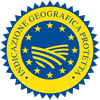Description
The Scalogno di Romagna PGI refers to the fresh or dry bulb vegetable belonging to the species Allium ascalonicum, Romagnolo ecotype.
Production Area
The production area of Scalogno di Romagna PGI is within several municipalities in the provinces of Ravenna, Forlì-Cesena and Bologna, in the Emilia Romagna region.
Production Method
Scalogno di Romagna PGI cannot be cultivated in succession or after other Liliaceous plants (garlic and onion). This scallion can only be cultivated on the same piece of land after five years, and continuous cropping (the same cultivation on the same piece of land) is not allowed. It cannot be planted after Solanaceus plants, beet or cabbage, while it can be rotated with wheat, barley, radicchio, lettuce and carrots. As Scalogno di Romagna PGI has no seed, and therefore no inflorescences or pollination, it is necessary to plant the bulbils (smaller bulbs) of the Romagnolo ecotype of the species Allium ascalonicum for the reproduction of the vegetable, which are conserved during the harvesting period of the previous year. Planting takes place in November and December. The fresh product is harvested from June of the following year; the harvest of the dried product lasts until mid-July. The bulbs are harvested when the leaves are withered and yellowish in colour and there is a loss of turgor in the tissues. The permitted total production is 8000 kg per hectare. The dry product is kept in barns, under awnings or in other well-ventilated areas for a few weeks.
Appearance and Flavour
Scalogno di Romagna PGI has a pear-shaped bulb with a coriaceous peel. The flesh is violet with hues of white. It is covered with a thin, different coloured skin, ranging from yellow to coppery grey and reddish brown. The flavour is much stronger and more fragrant than that of an onion, but sweeter than many varieties of garlic.
History
The scallion, which originates from the city of Ascalon in the Middle East (from which the etymological connection with the scientific name comes), is referred to in works by Ovid, who mentioned it while discussing the aphrodisiacal properties of food, as well as in works by Pliny the Elder (1st century AD). Over the centuries, the scallion became so diffused that since the Middle Ages it has been mentioned in several publications on culture, tradition and gastronomy. Over the years, the Romagna scallion has become part of the local gastronomical culture, so much so that in his book Romagna gastronomica, Corrado Contoli referred to it as being a product that is consumed exclusively in its place of origin.
Gastronomy
Scalogno di Romagna PGI should be kept in a dry, cool and well-ventilated place. It is extremely versatile and boasts many uses. It is generally used in mirepoix for sauces, ragù and fillings, as well as for flavouring stews and boiled, braised and roasted meats. Scallion leaves that are picked while still green can be finely chopped and used to add flavour to mixed salads.
Marketing
The product is marketed as Scalogno di Romagna PGI. The fresh product is available in June, while the dry product is available from July to December. Both varieties are sold in bunches of around 100 g to 1 kg, and the dried product also comes in braids or net bags, bags, or plateaux boxes containing between 100 g and 5 kg of dried bulbs. Scalogno di Romagna PGI is also available as a transformed product in oil or vinegar.
Distinctive Features
Scalogno di Romagna PGI is different from other varieties of scallion grown elsewhere due to its distinctive organoleptic properties: its colour, fragrance, flavour, aroma and delicacy give this product a unique role in gastronomy.


































